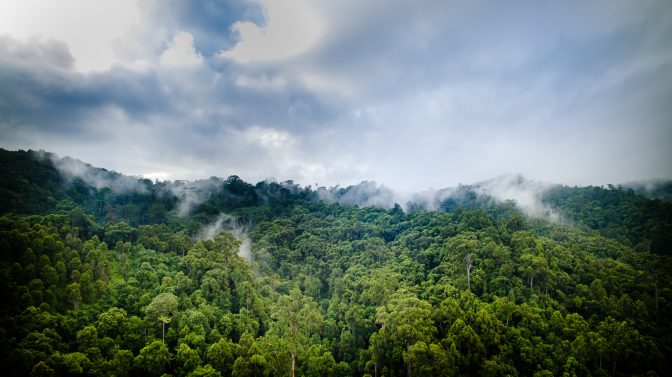- Arm-Qualcomm Contract Fight Threatens to Upend Chip Industry
- Canadian Finance Minister resigns as Trudeau government’s popularity flounders
- Pepe Coin Price Drop: Key Support Levels and Market Trends
- Canadian foreign, finance ministers meet Trump’s team on tariffs
- Rexas Finance (RXS): The Next Big Alternative to Shiba Inu
You are viewing: A greener 2025: What’s next for forests, climate finance and nature?
“Everything looks like a failure in the middle,” John C. Maxwell wrote in his book The 15 Invaluable Laws of Growth (2012).
Building resilience is a long-term process that involves many setbacks, or points of chaos, that eventually make sense when critical parts of the system start to flow and work together.
This means progress in solving the climate, biodiversity and desertification crises will often resemble a game of snakes and ladders where ‘two steps forward, one step back’ can still lead to success.
As a new year begins, we look back at 2024 with both disappointment and hope.
Unfortunately, the world saw another stumbling block along the path to a sustainable future. In December, the World Meteorological Organization announced that 2024 was set to be the warmest on record, following nine record-breaking years of heat over the past decade.
Last year’s unprecedented temperatures fuelled heatwaves, drought, wildfire, storms and floods that killed thousands of people and displaced millions more, showing how dangerous life has already become with 1.3 degrees Celsius of human-induced warming, according to a recent report by World Weather Attribution.
Yet there were also rays of hope in 2024 through the three Rio Conventions on climate change, desertification and biodiversity.
See more : Concurrent Partners with TIFIN @Work to Elevate Workplace Financial Solutions
Firstly, at the COP29 climate summit in Azerbaijan, delegates discussed ways to increase finance for developing countries – which contribute least to global carbon emissions but are hit hardest by the effects of climate change – to help them cope with the impacts of extreme weather.
The annual event included an agreement to triple the amount of climate finance paid to developing nations to USD 300 billion per year, by 2035. While this figure sounds like a lot of money, it is still well below the USD 1.3 trillion that climate experts say these countries need to adapt to climate change. But it’s a good start.
Secondly, in Saudi Arabia, the COP16 conference of the UN Convention to Combat Desertification agreed to create a Caucus for Indigenous Peoples and a Caucus for Local Communities to ensure that their unique perspectives and challenges are adequately represented in the work of the UNCCD.
And thirdly, in Colombia, the world’s largest biodiversity summit – also known as COP16 – produced several landmark decisions, including first-ever agreements on the creation of a global fund for collecting economic resources from the use of digital genetic data; and on recognizing people of African descent and Indigenous Peoples as key stewards in conservation efforts.
These small steps forward helped build the foundations for more progress in 2025, a year with much in store for climate, biodiversity and land restoration.
In the International Year of Glaciers’ Preservation, global efforts will focus on protecting the cryosphere – Earth’s frozen regions – which are critical to regulating global temperatures. These rapidly melting ecosystems provide freshwater that is essential to billions of people living in or near mountainous areas.
In July, the Convention on Wetlands will convene its triennial Conference of the Contracting Parties at COP15 in Zimbabwe, where delegates will chart a course for the next three years to protect a range of ecosystems, including lakes and rivers, underground aquifers, swamps and marshes, wet grasslands, peatlands, mangroves and other vital wetlands.
In October, the International Union for Conservation of Nature and Natural Resources (IUCN) will stage its regular congress – held every four years – in Abu Dhabi to promote sound environmental governance in a society that shares both the responsibilities and the benefits of conservation.
Then, in November, the COP30 climate summit in Brazil, will build on the progress of previous conferences of the parties by ratcheting up the commitments of Member States that signed up to the Paris Agreement in 2015. The chosen region for the event, in the Amazon rainforest, will hopefully remind participants of the many years that have passed since the ground-breaking Earth Summit in Rio de Janeiro in 1992, highlighting the need to scale up support for mitigation efforts and adaptation finance for the most vulnerable nations.
See more : Strong financial results trigger 3% bonuses for Port Canaveral staff
Forests and trees can help build on the progress made at the three COPs in 2024. They contribute to community resilience, provide ecosystem services to people, support the soil’s ecological functioning and mitigate the effects of crop failure during droughts.
Eliminating emissions from deforestation and increasing carbon removals by promoting agroforestry and landscape restoration could reduce global net emissions by 30 percent. Over the next decade, forests could provide up to 50 percent of the cost-effective mitigation available.
CIFOR-ICRAF scientists are helping to combat deforestation and biodiversity loss through targeted research and engagement across all our thematic areas, particularly through our work on tree genetic resources, restoration, sustainable forest management, as well as soil and land health.
We are also focusing on finance through our Resilient Landscapes initiative, which envisions a world where nature, business and communities thrive equitably in harmony. This CIFOR-ICRAF venture was created to spur large-scale impact investment in nature-based solutions, acting as a bridge between science and the private sector to tackle climate change, deforestation, biodiversity loss and land degradation.
As we begin the new year, let’s build on past progress and help reverse the climate, biodiversity and land degradation setbacks experienced in recent years. If forests and trees are allowed to perform their natural functions undeterred, there is still time to bend the curve on climate change, biodiversity loss as well as land degradation and stop the run of heat records in the long term.
What might look like failure now can still be turned into a midpoint towards success. At CIFOR-ICRAF, we look forward to continuing this journey to success for people, trees, forests and the planet with as many of you as possible. Are you game?
We want you to share Forests News content, which is licensed under Creative Commons Attribution-NonCommercial-ShareAlike 4.0 International (CC BY-NC-SA 4.0). This means you are free to redistribute our material for non-commercial purposes. All we ask is that you give Forests News appropriate credit and link to the original Forests News content, indicate if changes were made, and distribute your contributions under the same Creative Commons license. You must notify Forests News if you repost, reprint or reuse our materials by contacting [email protected].
Source link https://forestsnews.cifor.org/90827/a-greener-2025-whats-next-for-forests-climate-finance-and-nature?fnl=
Source: https://summacumlaude.site
Category: News







